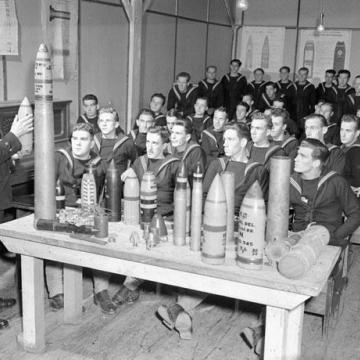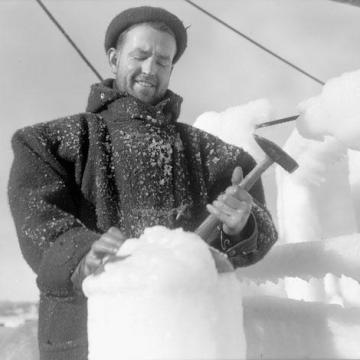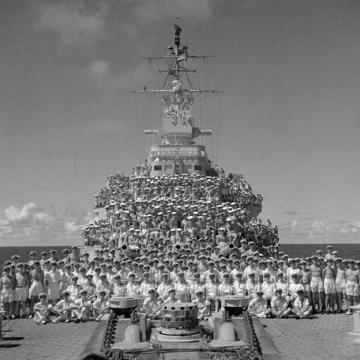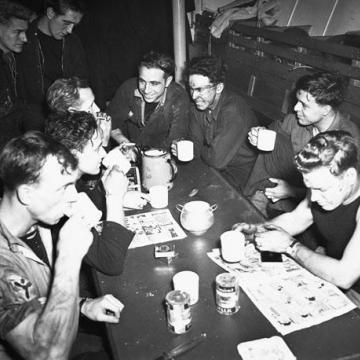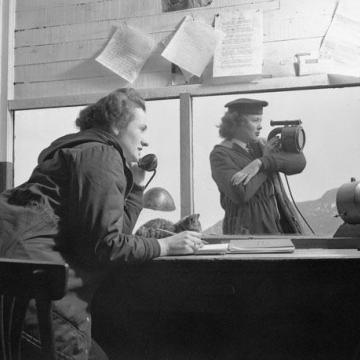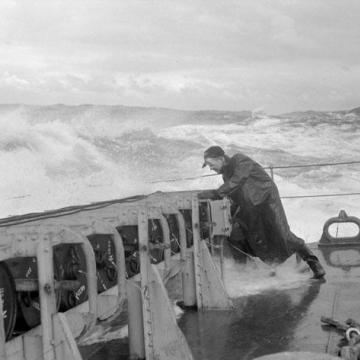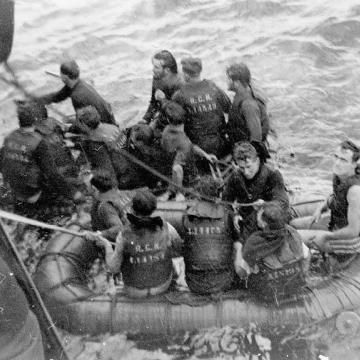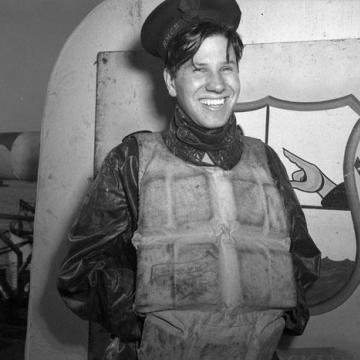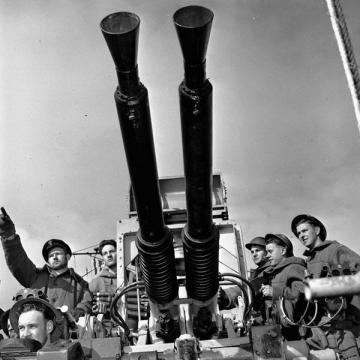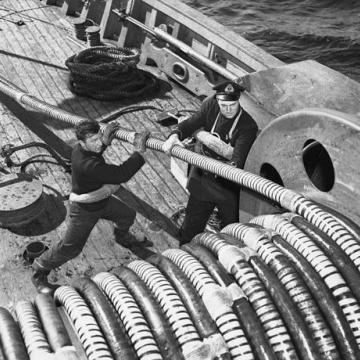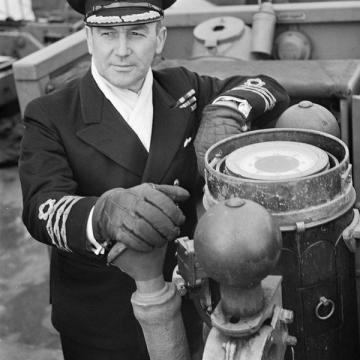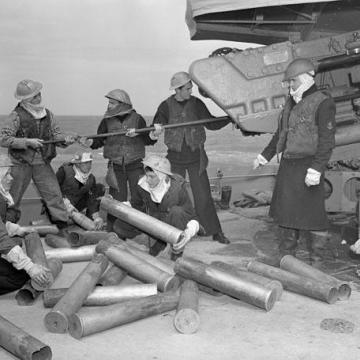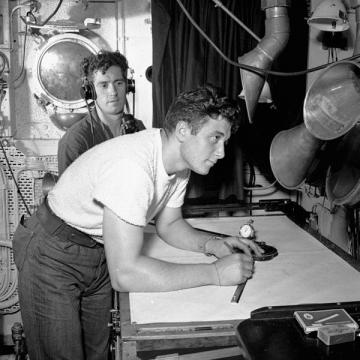Royal Canadian Navy
Through the course of the Second World War, the Royal Canadian Navy (RCN) enlisted 99,688 men and 6,500 women, to become the third largest navy in the world. The fleet contained 471 warships including aircraft carriers, cruisers, armed merchant cruisers, destroyers, frigates, corvettes, motor torpedo boats, minesweepers, landing craft, armed yachts and auxiliary ships.
The Canadian Navy had a large hand in the Battle of the Atlantic, which involved the protection of troop and supply ships running between North America and the United Kingdom. In November 1942, the RCN was involved in the Allied landings in North Africa, and in June 1944, it provided 110 and 10,000 men to support D-Day; the invasion of Europe. Later, HMCS Uganda took part in operations against Japan as part of the British Pacific Fleet.
By the end of the war, the Royal Canadian Navy lost a total of 24 ships to enemy action, and suffered 2,024 fatal casualties.
